Imagine a tiny natural compound that fights inflammation, heals your gut and skin, and boosts immunity – all without the nasty side effects of drugs. It exists, and it’s called KPV peptide. Never heard of it? That’s no surprise. It’s a small, unpatentable peptide, so the big pharmaceutical companies aren’t exactly advertising it. But biohackers, researchers, and even folks on Reddit are buzzing about KPV’s benefits. In this blog post, we’ll break down everything you need to know about KPV in super simple terms. We’ll cover what KPV is, how it works, the research-backed benefits, real-world stories, and how people are using it. By the end, you’ll see why KPV is gaining a cult following – and how to get your hands on high-quality KPV for research purposes to try it yourself (with an exclusive discount code included!). Let’s dive in and see why this little peptide has Big Pharma worried.
What is KPV Peptide?
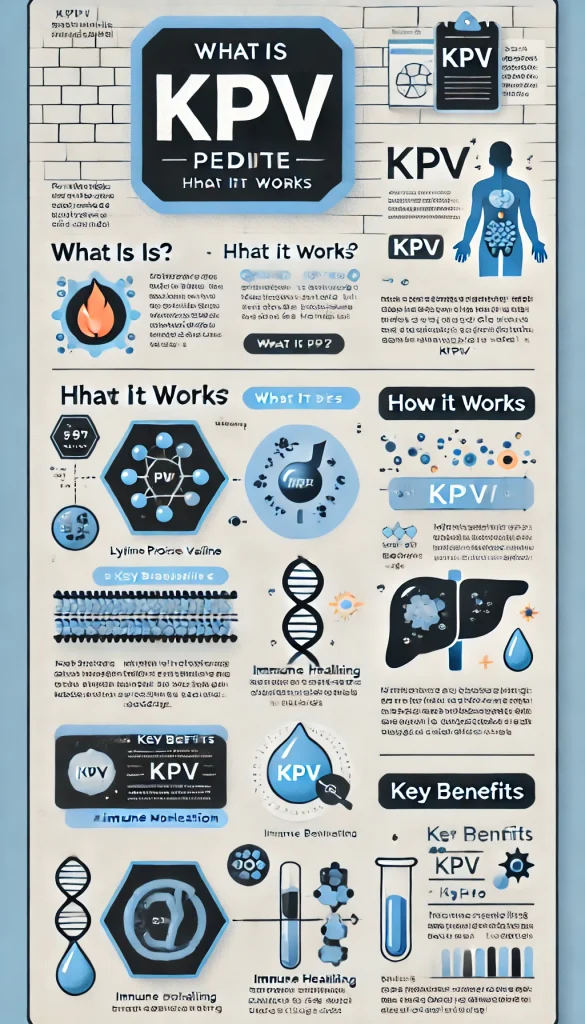
KPV is a tiny chain of three amino acids – Lysine, Proline, and Valine. In other words, it’s a tripeptide (that’s just science-speak for “three amino-acid peptide”). Even though it’s small, KPV packs a serious punch. It was originally derived from a hormone our bodies make (alpha-MSH), but researchers found that this specific three-amino combo has powerful anti-inflammatory effects. Think of KPV as a natural message your body understands – telling your cells to “calm down” inflammation and start healing.
KPV is not a pharmaceutical drug; it’s a natural peptide fragment. That means it can’t be patented like a new drug, which might be why you’re not hearing about it in TV commercials. But scientists and health enthusiasts are paying attention. In fact, KPV has become the subject of increasing interest in the scientific community, and early research is very promising.
Here’s the best part: KPV seems to be safe and well-tolerated. It’s a naturally derived peptide, and studies show it causes no notable side effects when used orally, as an injection, or even as a topical cream. So you get a gentle, natural approach to healing – without the downsides of harsh meds.
How Does KPV Work? (Simplified)
Okay, so how does this tiny peptide actually help your body? In simple terms, KPV goes inside your cells and tells the “inflammation switches” to turn off. When your body has an injury or illness, it releases signals (like cytokines) that cause inflammation. KPV enters the nucleus of cells (the cell’s control center) and stops those inflammatory signals from going overboard. It’s like a little firefighter going into the cell and dousing the flames.
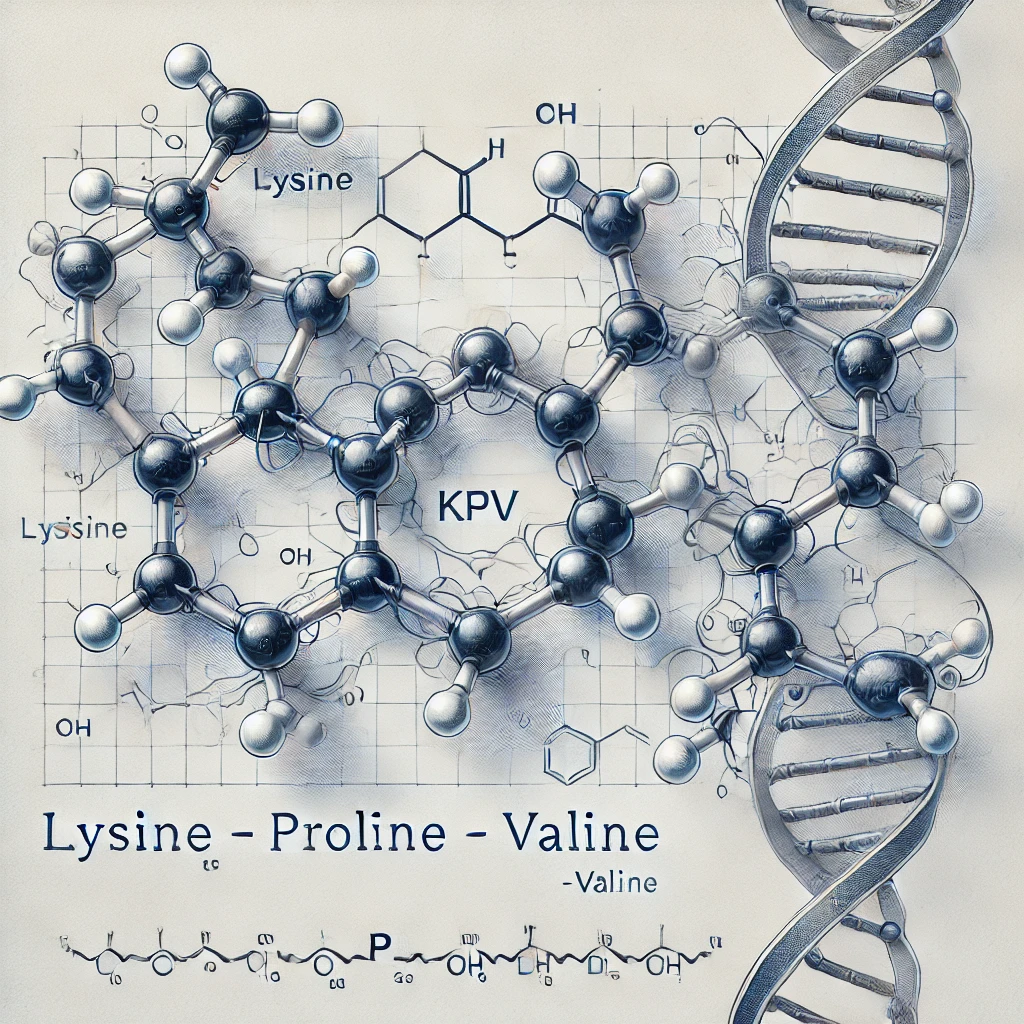
What’s really cool is KPV lowers chronic inflammation without wiping out your immune system. Many powerful anti-inflammatories (like steroid drugs) suppress your immune system as a trade-off. KPV is different – it reduces inflammation broadly but doesn’t cause strong immunosuppression like corticosteroids do. In other words, it calms things down just enough to promote healing, but not so much that your body can’t defend itself. This is a big deal – it means KPV could help with inflammatory conditions without the scary side effects of steroid meds or immune-suppressants (the ones Big Pharma sells at high prices).
KPV also has a special “delivery buddy” in your gut: a transporter called PepT1. PepT1’s job is to absorb small peptides in the intestines. Scientists discovered that KPV uses PepT1 to get into cells in the gut and immune system. In fact, PepT1 is more active in people with inflammatory bowel disease, so KPV sneaks in through that route to soothe gut inflammation. Researchers concluded KPV’s mode of action has three parts: it blocks key inflammatory pathways (NF-κB and MAPK), it works via PepT1 transport, and oral KPV can dramatically reduce colon inflammation in animal models. That’s a fancy way of saying even when simply taken by mouth, KPV was shown to greatly improve inflammatory bowel disease in research – pretty amazing for a tiny peptide!
Besides fighting inflammation, KPV also fights germs. It has surprising antimicrobial and even antifungal powers. Lab studies showed KPV can inhibit nasty bacteria like Staph (S. aureus) and even yeast like Candida albicans from growing. This means KPV might help knock out infections or imbalances in the gut and skin while it reduces inflammation. Talk about multitasking!
To sum up, KPV works by:
- Calming the immune response: going inside cells to dial down excessive inflammation.
- Helping the gut heal: using PepT1 transport to reach gut cells and reduce colitis (inflammation of the colon)
- Fighting microbes: directly killing or stopping growth of some bacteria and fungi.
Balancing mast cells: acting as a mast cell stabilizer (mast cells release histamine in allergies), so it can reduce allergic reactions and histamine issues. - Encouraging repair: there’s evidence it helps tissues regenerate, like speeding up wound healing and nerve repair, but we’ll get to that next.
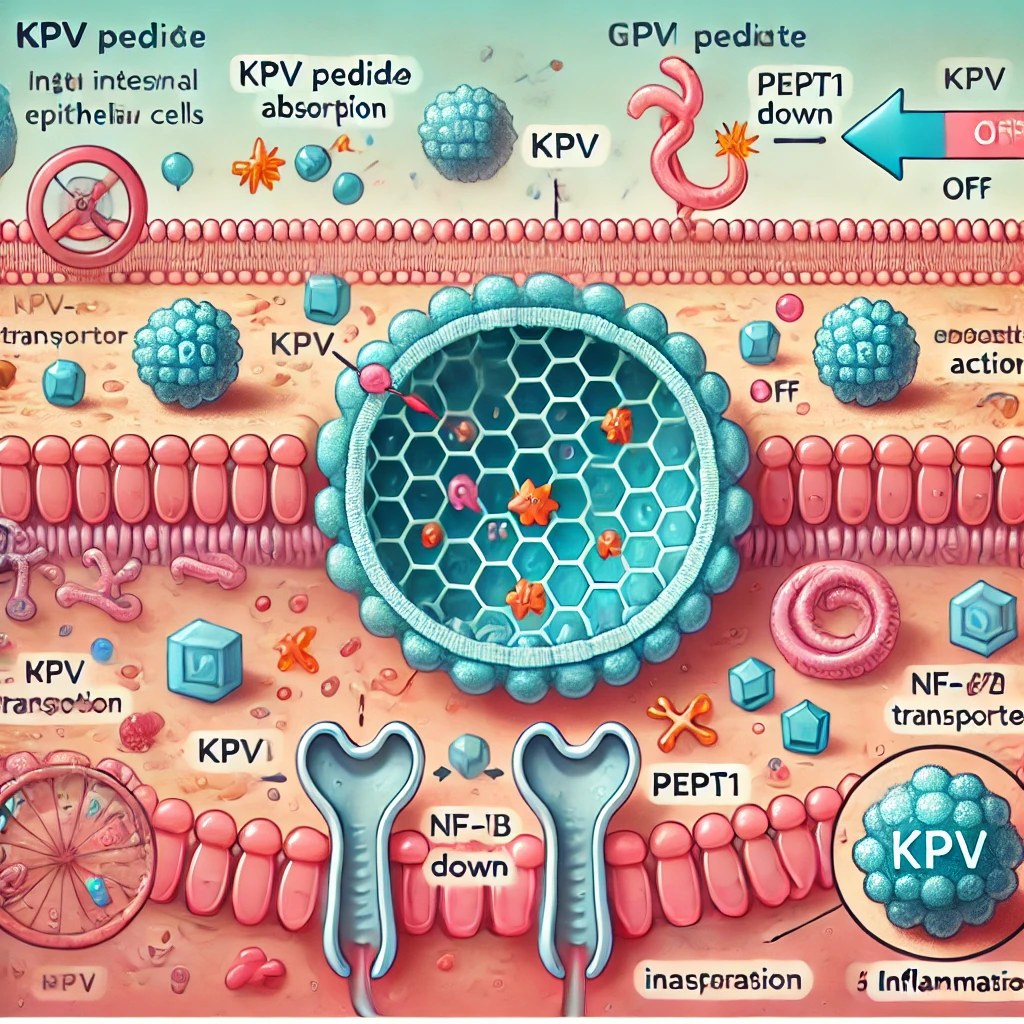
The bottom line is KPV helps your body heal itself, rather than just masking symptoms. It’s like giving your system a gentle push back towards balance. No wonder so many people are excited about it!
Proven Benefits of KPV Peptide (What Science & Experience Say)
KPV peptide sounds almost too good to be true – but the research and real-world reports are piling up to support its benefits. Let’s break down the key areas where KPV shines, in plain English:
- 🔬 Powerful Anti-Inflammatory: This is KPV’s main claim to fame. Even in tiny (nanomolar) amounts, KPV can stop major inflammatory pathways (NF-κB and MAPK) and reduce pro-inflammatory cytokines. What does that mean for you and me? It means KPV might help calm down conditions driven by inflammation – think arthritis, autoimmune flares, asthma, or just chronic aches and pains. And remember, it does this without acting like a steroid – it tamps down inflammation but doesn’t totally shut off the immune system. In one study, mice with induced colitis (an inflamed colon condition) that were given KPV in drinking water had much less inflammation and damage than those without. Scientists are excited because this suggests KPV could be a whole new way to treat inflammatory bowel diseases (like Crohn’s and ulcerative colitis) effectively.
- 🥣 Gut Healing & Digestive Relief: Perhaps the most immediate impact people notice with KPV is in their gut. It can heal and soothe the entire GI tract, from the stomach to the colon. Early research and user reports have shown KPV helping IBS (irritable bowel syndrome), IBD (inflammatory bowel disease), acid reflux, and even leaky gut. One scientific review noted KPV “accelerates mucosal healing” in the colon. And in real life, users are seeing big changes: for example, one patient with years of chronic IBS had a dramatic reduction in bloating and pain after starting KPV – finally able to eat without agony. Another person with persistent SIBO (small intestinal bacterial overgrowth) and bloating found those issues resolved within weeks of using KPV. KPV helps the gut lining seal up (preventing that “leaky gut” where bad stuff slips into your bloodstream) and reduces the vicious cycle of inflammation there. If you’ve tried probiotics and diets with limited success, KPV might be the game-changer that actually fixes the root inflammation in the gut.
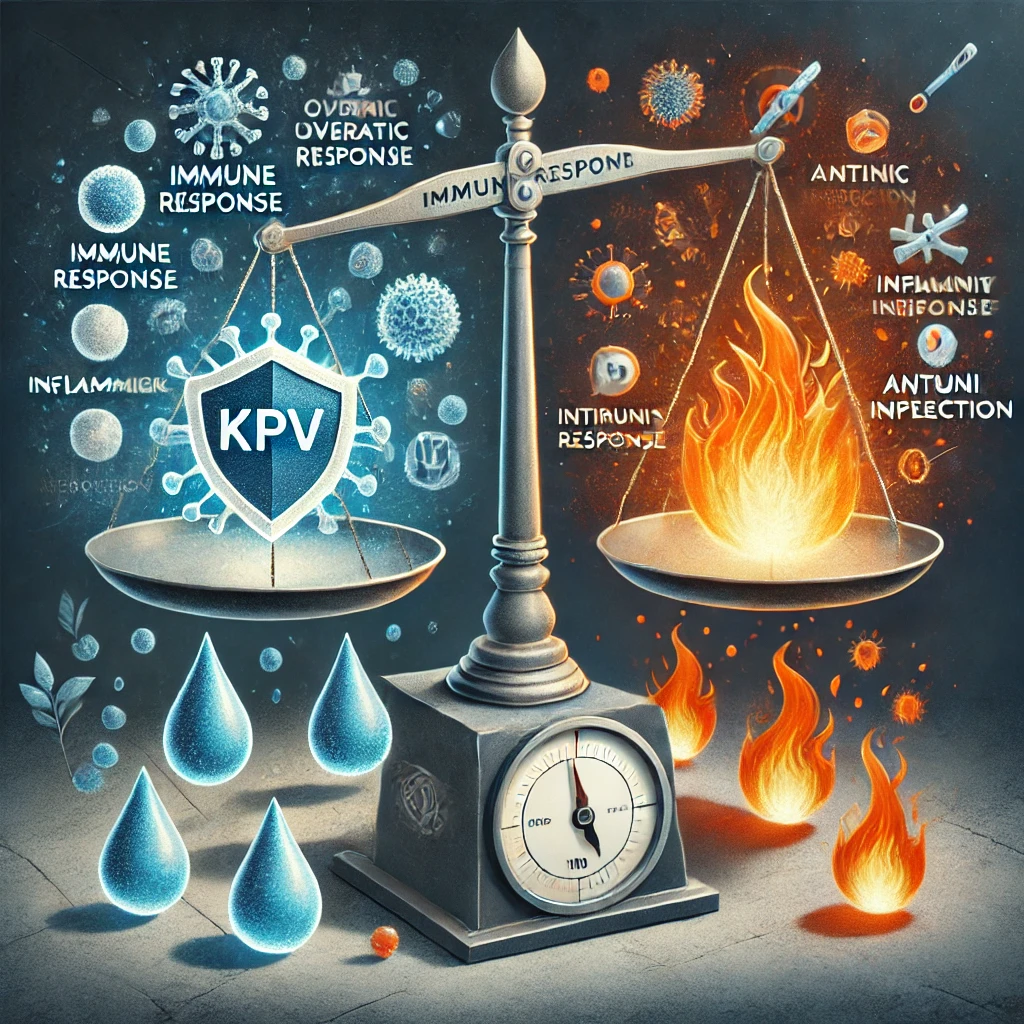
- 💪 Immune System & Autoimmunity: KPV doesn’t just help the gut; it also balances the immune system as a whole. It’s being looked at as a therapy for conditions like Mast Cell Activation Syndrome (MCAS) and histamine intolerance. Why? Because it calms down overactive mast cells (the ones causing hives, allergic reactions, flushing, etc.). People suffering histamine overload – allergies, hives, itching, even anxiety related to immune triggers – finally have a lifeline with KPV. One Reddit user with severe MCAS (who reacted to almost everything, even exercise and hot showers) shared that a peptide stack including KPV put her MCAS into remission after one cycle. She went from living on only 5 safe foods to eating freely and needing no antihistamine meds at all! That’s huge. KPV’s immune benefits also mean it may help with autoimmune conditions by reducing the chronic inflammation that drives them. Users and some doctors have reported improvements in autoimmune gut diseases, psoriasis and eczema (autoimmune skin issues), rheumatoid arthritis, and more after using KPV. And unlike the usual autoimmune meds that suppress immunity broadly (like biologic drugs or steroids), KPV might calm the storm without the immune crash. This “have your cake and eat it too” effect has folks calling KPV a godsend for hard-to-treat inflammatory conditions.
- 🦠 Antimicrobial (Kills Bad Bugs): Here’s an unexpected bonus: KPV is not only anti-inflammatory, but also anti-microbial. It’s like it cleans up the mess and the troublemakers. Research demonstrates KPV can inhibit bacteria such as Staphylococcus aureus (a common cause of skin infections and MRSA) and Candida albicans (yeast that causes thrush or Candida overgrowth). In one study, KPV significantly stopped Staph bacteria from forming colonies. So if you have a wound or gut issue involving bad bacteria or yeast, KPV might directly help fight those germs. People with Candida issues or chronic sinus infections have noted improvements while on KPV – likely because it’s quietly knocking down the infection as it reduces inflammation. There’s even a quote from a medical doctor suggesting KPV could be the key to finally solving chronic fungal infection problems in medicine. We’re talking about a peptide that might beat drug-resistant yeast – wow. Plus, by restoring balance in the gut microbiome (helping good bacteria flourish over bad), KPV might address problems like SIBO from both angles – less inflammation and fewer bad bugs.
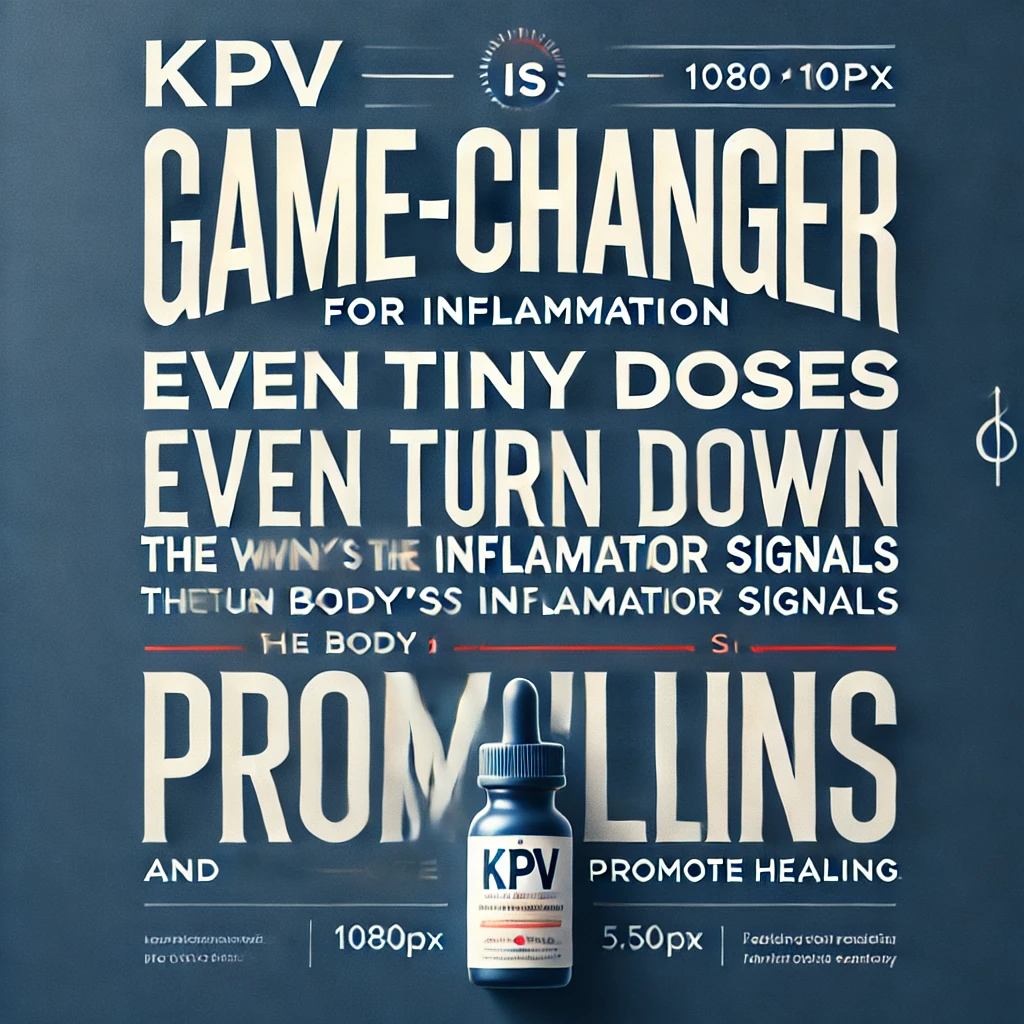
- 🤕 Faster Wound Healing & Tissue Repair: KPV appears to help the body heal and regenerate tissues faster. Studies on wound healing show that KPV speeds up the closure of wounds, reduces swelling and infection at the injury site, and even improves the kind of scar that forms. In fact, KPV can reduce the type of excessive inflammation that leads to big, raised scars (keloids) – resulting in smaller, thinner scars and better collagen organization as the wound heals. This has huge implications: someone with a burn or surgical wound could heal better and with less scarring using KPV. One patient story from a clinic: a man recovering from knee surgery took KPV and noticed much less pain and no infection, and he healed faster than expected, getting back on his feet quickly. Athletes and biohackers are even using KPV after tough workouts or injuries (like sprains and strains) to speed up recovery. There’s also evidence KPV helps nerve tissue regenerate after injury, which is quite amazing – it might aid recovery from nerve damage or neuropathy. Some are exploring KPV for brain health too (since chronic brain inflammation is a factor in conditions like Alzheimer’s or concussions). While research is early here, the anti-inflammatory effect of KPV could be protective for nerves in the long run.
- 🌟 Skin Health & “Beauty” Benefits: Our skin loves KPV as well. Because it fights inflammation and microbes, KPV can improve inflammatory skin conditions like acne, eczema, and psoriasis. For instance, psoriasis (an autoimmune skin disease) is usually treated with steroid creams that can thin the skin over time. KPV offers a steroid-free alternative. In studies, people with psoriasis who used KPV saw reduced redness, itching, and scaling – and they could use it long term without the side effects of steroids. KPV’s antimicrobial action also helps clear acne by fighting bacteria, and its healing powers reduce redness and swelling in pimples. Some adventurous users even make a KPV topical cream for stubborn skin rashes or slow-healing cuts, reporting faster healing and relief. And here’s a surprising area: hair loss. KPV was actually researched by L’Oréal as a potential hair loss treatment – some call it the “forgotten hair loss peptide.” Why? It appears those three amino acids together have unique effects on skin/hair cells. While it’s not a mainstream hair loss remedy yet, there’s growing interest in whether KPV could help with conditions like alopecia or just improving scalp health (since it reduces inflammation). At the very least, if you have an irritated scalp or skin inflammation contributing to hair shedding, KPV might calm it down.
- 🛡️ Potential in Serious Conditions: Because chronic inflammation is at the root of so many diseases, KPV’s reach might be very broad. Early investigations are looking at it for things like colitis-associated cancer (since long-term colon inflammation can lead to cancer). One study in mice found that using KPV in colitis not only reduced inflammation but also prevented the development of colon cancer in those mice. That’s preliminary but exciting – it hints that KPV’s anti-inflammatory action could lower cancer risk associated with inflammation. There’s also speculation around neurodegenerative diseases (like Parkinson’s, MS, Alzheimer’s) which have inflammatory components – could KPV help there? Some doctors think it’s worth researching. And let’s not forget the whole immune system balance: KPV might even help in conditions like chronic fatigue or long-haul illnesses by reducing the inflammatory overload. For example, the author of one recovery blog credits KPV with resolving her long COVID symptoms and POTS (a nervous system issue) after nothing else worked. Again, more studies are needed, but these stories show the potential scope of KPV’s benefits.
Whew – that’s a lot of benefits! To recap, KPV peptide has shown promise in:
- Healing gut conditions (IBS, IBD, SIBO, leaky gut)
- Reducing whole-body inflammation and autoimmune flares (from arthritis to asthma)
- Knocking out infections (Candida, Staph, possibly Lyme bacteria)
- Stabilizing mast cells and easing allergies/MCAS
- Speeding up wound and injury repair (with better scars)
- Improving skin issues (psoriasis, eczema, acne) without steroids
- Possibly helping nerve repair and brain health
- Giving relief where other meds failed – with minimal side effects
.
It sounds almost heroic, right? No wonder many users say it feels “too good to be true” – until they try it and see the results. As one person put it after using KPV: “I thought the benefits were too good to believe, but it actually delivers!”
.
Real-World Experiences: Biohackers & Patients on KPV
While the science is compelling, real-world stories make KPV’s impact come alive. Since KPV is relatively new on the scene (at least outside of labs), people have been sharing their personal experiences on forums, Reddit, and in biohacking groups. Here are a few highlights showing how KPV is being used and what results people are seeing:
- “Nothing Worked Until KPV” – Severe Allergies & MCAS: We mentioned this earlier – a Reddit user (Ill-Stuff6550) posted in r/HistamineIntolerance about her battle with Mast Cell Activation Syndrome. She was basically allergic to life (could only tolerate a handful of foods, reacted to heat and exercise, on loads of meds). She tried a peptide stack that included KPV (with BPC-157 and a couple others) and says it put her MCAS into remission after one cycle. Suddenly she could eat normally (even leftovers and foods that would’ve triggered her before) and take hot showers with no reactions. She stopped all antihistamines and said “I sometimes forget I ever had [MCAS]”. This is astonishing considering how life-altering MCAS can be. It shows the power of KPV to stabilize the immune system and heal the gut (since a lot of histamine issues start in the gut). Now, that was with a stack – but she credits KPV as a key player. Many others with milder histamine issues (seasonal allergies, etc.) have also reported that taking KPV reduced their symptoms, sometimes dramatically, within weeks.
- Crohn’s/Colitis Communities Talking About KPV: In forums for Crohn’s disease and ulcerative colitis (both serious IBD conditions), KPV is becoming a hot topic. People who’ve struggled with pain, bleeding, and bathroom trips for years are curious if this peptide could succeed where medications like biologics have failed. A few brave biohackers with IBD tried oral KPV capsules and reported reduced gut pain and inflammation markers. One user shared that KPV “calmed my flares and gave my gut a break to heal,” whereas before, they only got relief with high-dose steroids (which have awful side effects). It’s still early and mostly anecdotal, but if you lurk on Reddit’s IBD threads, you’ll see more folks asking about KPV peptide therapy. Even some integrative doctors are starting to mention it as an alternative approach for IBD that addresses the inflammation at the source.
- Biohackers & Bodybuilders – Healing and Recovery: In the fitness world, peptides like BPC-157 and TB-500 are already known for injury healing. Now KPV is joining the club. Bodybuilders and athletes on forums have started including KPV in their injury recovery stacks – especially for gut-related issues or systemic inflammation. For example, one Reddit post in a peptide forum asked those who used “BPC-157 + GHK-Cu + KPV + TB-500 after surgery” how long they did it – implying that people are indeed combining KPV with other repair peptides post-surgery. The anecdotal feedback: those who used KPV along with BPC-157 after surgeries or muscle tears felt they healed faster and had less lingering inflammation. A user recovering from a rotator cuff surgery noted that adding KPV helped reduce joint inflammation and pain, complementing BPC-157’s tendon-healing effects. Another lifter with chronic tendonitis took KPV and found it eased the inflammation enough to finally allow healing (where NSAID pills hadn’t helped). The consensus among biohackers is that KPV is a potent “supporting actor” – on its own it lowers inflammation and primes your body to heal, and when combined with a tissue-specific peptide, it creates a powerful healing synergy. It’s like giving your recovery an extra boost.
- “I Got My Life Back” – Chronic Illness Bloggers: Outside of forums, personal blogs have popped up recounting KPV journeys. One compelling story is from a mother and daughter duo who blog at Diary of Recovery. They started KPV to help with long-haul post-illness issues. The results? Within two weeks, they saw relief from things like chronic yeast infections, bloating, IBS, allergic hives, asthma and even acne. By four weeks, their recurrent SIBO was gone, fatigue lifted, and even long-time allergies and POTS (a dizziness condition) resolved. They were understandably shocked. They mention the “best parts” of KPV were that it was effective at a very small dose, basically tasteless (easy to take), and did not require a prescription (accessible to anyone). The only minor downside they found was they had to dose it frequently (every few hours) to keep symptoms at bay – more on dosing in a moment. But for them, that inconvenience was a small price for what they call “transformative” health improvements. Another blogger focused on hair loss noted that KPV showed promise in re-growing hair and reducing scalp inflammation, dubbing it a “forgotten cure” that never made it to market after L’Oreal’s initial research. You’ll also find YouTube videos and podcasts where biohackers rave about better mood, clearer skin, and zero joint pain after adding KPV to their routine.
- Trends in Popularity: If you check Google Trends, searches for “KPV peptide” have skyrocketed in the past couple of years as these success stories spread. It’s gone from an obscure research peptide to a sought-after healing tool in the biohacking and functional medicine circles. Some progressive clinics (especially those focusing on integrative medicine or hormone therapy) now offer KPV to patients. For example, one clinic in Beverly Hills advertises KPV peptide therapy for inflammation and calls it “one of the body’s most potent regulators of immune balance”. Another anti-aging institute lists KPV alongside other cutting-edge peptides and summarizes research on it (with dozens of scientific references) to educate patients. So the word is getting out: KPV is trending upward as more people discover its benefits. It’s still not “mainstream” by any means – your regular doctor might not have heard of it – but it’s certainly not underground anymore either. We’re at the tipping point where enough anecdotal evidence and research exists that KPV could become a standard option for inflammation-related ailments in the near future.
In short, the real-world usage of KPV spans a wide range – from biohackers looking to optimize recovery and gut health, to chronic illness warriors who feel like they finally found relief, to everyday folks just tired of being on multiple meds and willing to try a more natural approach. The tone of the discussions is often “Why isn’t everyone talking about this?!” given how much it’s helped. Of course, everyone’s experience can differ, but the consistent theme is KPV often succeeds where conventional options didn’t – and usually with way fewer side effects. It’s like a breath of fresh air for those who’ve been through the ringer with chronic health issues.
Before you get too excited and start sprinkling KPV on everything (just kidding – you’d actually dose it carefully, not sprinkle!), let’s go over how people take KPV, what forms it comes in, and how to use it effectively and safely.
How to Use KPV: Forms, Dosage, and Tips
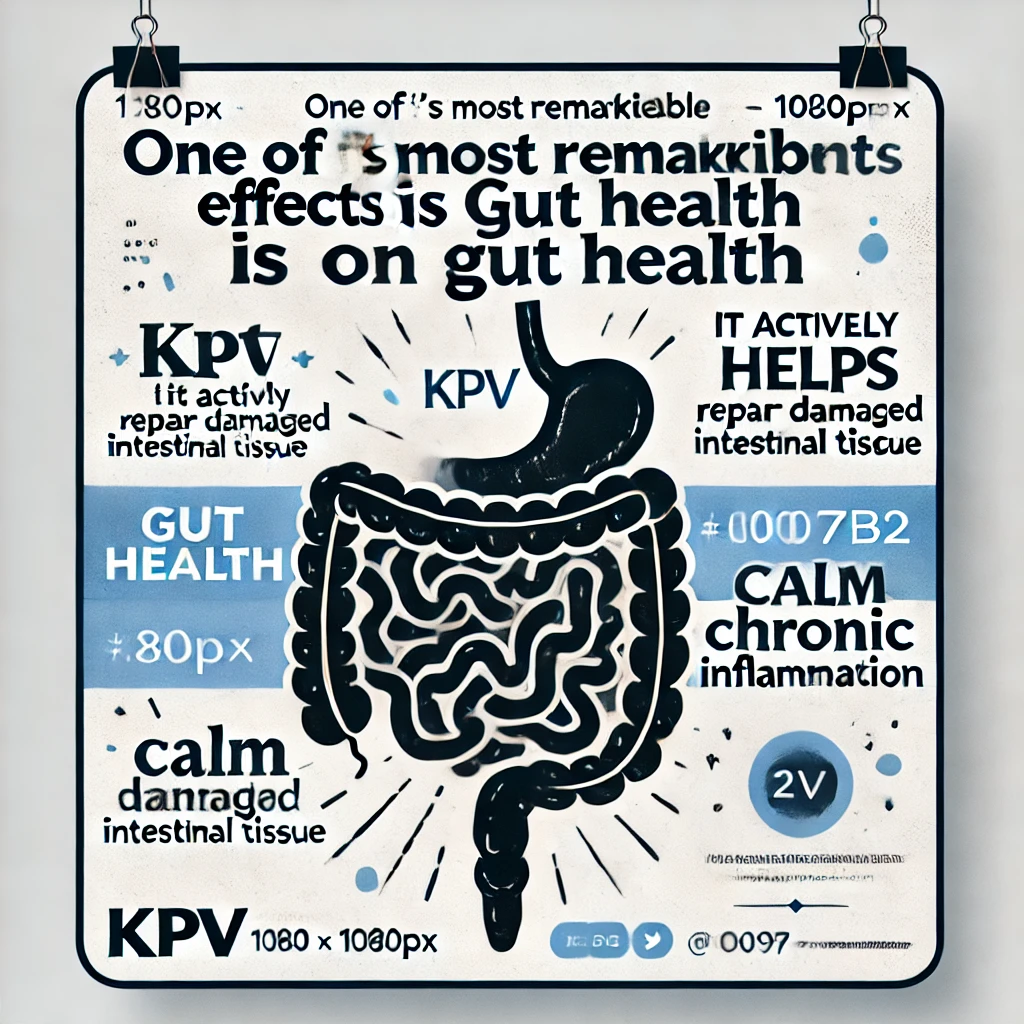
KPV peptide is available primarily as a research compound, which means you won’t find it at your local pharmacy, but you can find it through specialized labs and peptide suppliers online. It typically comes in a lyophilized powder (usually 5mg or 10mg vials) that you reconstitute with sterile water if you plan to inject it. However, not everyone is injecting – in fact, a lot of people use KPV orally. Here are the common forms and ways to use KPV:
- Oral Capsules/Powder: Some vendors sell KPV capsules (often 200–500 micrograms per capsule), or you can buy the pure powder and make your own capsules. Oral KPV has been shown to work effectively, especially for gut and systemic inflammation. Many biohackers start with oral dosing because it’s easy and non-invasive. A typical oral dose might be around 250–500 micrograms per day, sometimes split into multiple doses. Because KPV is small, it can survive the stomach and get absorbed (especially with that PepT1 transporter in the gut). Some users actually open the capsule and take the powder sublingually (under the tongue) for faster absorption. KPV powder is almost tasteless and dissolves easily, so this is a handy trick – it gets into the bloodstream quicker than going through digestion.
- Injection (Subcutaneous): For those comfortable with injections (like many in the fitness community), KPV can be reconstituted with bacteriostatic water and injected subcutaneously (under the skin, e.g., belly fat area) using an insulin syringe. Injections bypass the digestive tract and ensure 100% absorption. A common research dosage for injection is around 200-500 mcg per injection, and people might do this once daily or a few times a week depending on their needs. In cases of severe systemic inflammation or acute injury, some might go up to 1mg (1000 mcg) per day in divided doses, but that’s on the higher end. It’s important to note: if you inject, you should follow sterile procedures (clean hands, alcohol swab the vial and skin, use new needles) because these are research chemicals. Many report great results with oral dosing alone, so don’t feel like you must inject KPV to benefit – you don’t. Oral vs. Injection: Interestingly, because of KPV’s mechanism, oral may be just as effective for gut issues since it directly contacts the gut lining and uses PepT1 transport. In fact, one could argue oral is preferred for colitis or IBS. Injection might be more useful if targeting something like a skin condition or a general inflammation issue where gut absorption isn’t as crucial. There are even accounts of people injecting KPV near an injury or an inflamed joint (localized injections) and feeling it helped that area heal faster.
- Topical: KPV can be mixed into a cream or spray for topical application. There are a few products out there, like a KPV nasal spray or oral spray (for mouth/throat inflammation). Also, compounding pharmacies can prepare a KPV cream. Topical use could be great for psoriasis patches, eczema flares, or even anti-aging/wound care on the skin. One novel use is a KPV nasal spray for sinus inflammation or mold exposure, since it can directly reduce inflammation in sinus tissues and possibly fend off fungal growth there. If you have a stubborn skin infection or rash, a KPV cream applied twice daily might do wonders by combining anti-microbial and anti-inflammatory action right on the spot.
Dosage Tips: Because KPV is so potent at tiny doses, more is not always better. In fact, one blogger noted they got excellent results with very small amounts (~50-100 mcg per dose) taken multiple times a day. They found that taking a little before each meal worked best for gut symptoms, rather than a big dose once a day. Every person is different, but a smart approach is to start low and go slow: e.g., start with ~200 mcg per day (oral) and see how you feel. You can gradually increase weekly. Some have gone up to 1mg/day and found no extra benefit beyond what they got at lower doses. In one case, a user reported feeling a bit of irritability when they jumped to a higher dose (750 mcg at once), which resolved when they backed down. This suggests that you should find the smallest effective dose – why waste peptide (and money) if a tiny dose does the trick, right?
Another tip: If you’re tackling a gut infection or Candida, go slow to avoid a big “die-off” reaction (when lots of microbes die and release toxins, making you feel sick). Some people even start with a “toothpick tip” amount of KPV powder for a few days to ease in. Because KPV can kill yeast/bacteria, you might experience a mild headache or fatigue at first – if so, just drink water, maybe take activated charcoal, and remember it’s temporary “die-off.” Using a gut binder and increasing KPV gradually can help manage this.
Timing: KPV works quickly but doesn’t stay long in the body. Its half-life isn’t well documented, but it might only actively signal for a few hours. That’s why many users take it multiple times per day (e.g., morning, midday, and evening) rather than a single daily dose, especially for continuous issues like allergy or pain. If you’re just using it for workout recovery, once after the workout could be fine. But for ongoing therapeutic use, splitting the doses helps maintain steady effect. The good news: because KPV has no serious side effects, you don’t have to worry about taking it frequently. It’s not like popping Advils all day and worrying about your liver – KPV is gentle on the body’s systems.
Legality and “Research Purposes” Notice: It’s important to know that KPV peptide is not an FDA-approved medication. It’s sold legally as a “research chemical”, which means vendors sell it for laboratory research only, not for human consumption (wink, wink). In practice, biohackers and some open-minded doctors do use it in humans, but officially you’ll see “for research purposes” on websites. This is similar to how other peptides (BPC-157, TB-500, etc.) are sold. So, when you buy KPV, you are acknowledging it’s for research – the onus is on you if you choose to self-experiment. Thousands of people do so safely, but it’s good to be aware of this status. We always recommend consulting with a knowledgeable healthcare provider if you have one, especially if you have serious health conditions or are on other medications. That said, many folks feel comfortable with KPV given its strong safety profile in studies and use.
Now, speaking of buying KPV – let’s talk about how to get quality KPV and not waste your money on junk.
Where to Buy High-Quality KPV Peptide Online
Since KPV isn’t in pharmacies, the best route is to buy KPV online from a reputable peptide supplier. But caution: not all peptide vendors are equal. You want to ensure you get a high-purity, legitimately tested product – after all, you’re likely putting this in your body (even if everyone has to say “research only”). Here are some tips for finding KPV peptide for sale that is high quality:
- Look for 3rd Party Testing: Reputable companies will have third-party lab test results (COAs) showing the purity of their KPV. You want 99% pure KPV (most top suppliers offer this). Check the site for a Certificate of Analysis. If they don’t mention testing, that’s a red flag.
- USA or European Manufacturers: Ideally, buy from companies that manufacture in the USA or Europe under quality controls. There are many out of China that might be fine, but it’s harder to verify. USA-made KPV (with GMP standards) gives extra peace of mind. For example, one prominent supplier offers 5mg KPV vials, 99% purity, USA-made – that’s the kind of spec to look for.
- Customer Reviews & Community Trust: Check forums or Reddit to see which vendors people trust for peptides. If everyone in r/Peptides or bodybuilding forums says “Vendor X has legit products” – that’s a good sign. Some known names in peptide sourcing include Peptide Sciences, Limitless Life, Core Peptides, etc. (We are not tied to any particular one here, but do your research).
- Forms available: Decide if you want injectable vials or capsules. A few places sell KPV capsules (often marketed through wellness clinics or supplement sites) at a markup. Those can be convenient. If you’re okay doing a little DIY, buying a vial and dosing it out with a mini scale or insulin syringe into empty caps can save money. There are also premixed nasal/oral sprays by companies like Integrative Peptides (they have a product called “KPV Ultra” which is an oral spray). Just ensure whatever form, the source is legit.
We know shopping for research chems can be a bit Wild West, so to make it easier, we’ve partnered with a trusted peptide supplier that meets all the quality criteria. This supplier provides high-quality KPV peptide in 5mg vials, made in the USA, with third-party testing for purity. They label it for research use and ensure it’s handled properly. Many biohackers (and we ourselves) have used their products with great results.
👉 Exclusive Deal for Our Readers: If you decide to buy KPV online from our recommended source, you can use our promo code RC.kpv10 to get 10% off your order. This code is basically our way of saying thanks for reading and helping you get started with KPV at a discount. Just enter RC.kpv10 during checkout, and you’ll see the savings. (Make sure the code is applied before completing your purchase.)
We won’t name the vendor here (to keep things unbiased), but click the link Buy KPV Peptide from a Trusted Source which will take you to the site we trust. The 5mg KPV vial is usually what you’ll want to add to cart. If you’re new to reconstituting peptides, don’t worry – it’s pretty straightforward (we have a guide on that in another post, or many tutorials exist online). Essentially, you’ll add bacteriostatic water to the vial, then measure your doses with an insulin syringe. If going oral, you could even add water and use drops under the tongue.
Safety & Legality Note: When ordering peptides online, they generally ship in discreet packaging. In the US, it’s legal to buy and possess research peptides. Just don’t call up the vendor asking “How do I inject this in my shoulder?” – they will refuse to discuss human use. Keep communications strictly about “research”. Many people have successfully ordered peptides without any issues.
Lastly, storage – when you get your KPV, store the powder vial in a cool, dry place (some keep it in the fridge even before mixing). Once you mix it with water, keep it refrigerated and use it typically within 30-60 days for best potency.
Are There Any Side Effects or Downsides?
By now you’re probably thinking this sounds like a miracle peptide. But no substance is 100% without some cautions. The good news is, KPV’s side effect profile is extremely clean based on available research and anecdotal reports. Here’s what to know:
- Common Side Effects: Honestly, there aren’t many. Unlike many drugs, KPV doesn’t cause significant side effects in most people. It doesn’t seem to trigger allergic reactions commonly (despite being a peptide, it’s so small the immune system isn’t alarmed by it). It also isn’t known to upset the stomach or cause organ strain. Some people have noted mild temporary fatigue or headaches when first starting KPV – this is usually due to the “die-off” effect if you had a high microbial load (yeast/bacteria releasing toxins as they die). This usually passes in a day or two. Taking too high a dose at once might cause a bit of irritability or restlessness in some, as one user experienced, but this is easily avoided by using moderate doses. There’s no known toxicity. In fact, one clinic states KPV is safe for long-term use, with minimal reported side effects – at most, rare cases of slight GI discomfort or irritation at injection sites. In research, even high doses did not produce notable adverse effects.
- Interaction with Other Meds: Because KPV modulates inflammation, if you are on immunosuppressive drugs or anti-inflammatories, you might find you don’t need as much of those once KPV kicks in. Always be cautious and perhaps consult a healthcare provider if you plan to substitute KPV for any prescription treatment. That said, there’s no known dangerous interaction between KPV and common medications. It doesn’t affect liver enzymes or such. It might actually be synergistic with things like probiotics or other supplements aimed at healing.
- Tolerance/Dependence: There’s no dependence with KPV (it’s not habit-forming, and you won’t have “withdrawals”). Some wonder if the body will “get lazy” in controlling inflammation if you use KPV long-term – but evidence suggests no, because KPV isn’t replacing a hormone or anything, it’s more like facilitating normal anti-inflammatory processes. In fact, that blog we discussed reported that after 5 months of daily KPV, when they stopped, symptoms only very slowly started creeping back after a couple of weeks. This implies you could potentially use KPV to get things under control, then stop and see if your body maintains the improvements. Some individuals choose to stay on a maintenance dose (like a small dose daily or a couple times a week) because it keeps issues from returning. This is very individual. But nice to know you have flexibility.
- Quality Control: The main “downside” is if you get a bad product. As emphasized, buy from a trusted source because the worst stories out there are not about KPV itself, but about peptides that were bunk or contaminated. A bad peptide could cause injection site reactions or simply do nothing (waste of money). Stick to reputable suppliers (use our recommended one with code RC.kpv10 for safety).
Given all that, KPV has one of the best risk-vs-reward ratios we’ve seen. People often say, “The only regret I have is not trying it sooner.” It’s refreshing to have an option that isn’t a pharmaceutical but has real science and results behind it. It feels like a win for the “little guy” – using knowledge and nature to heal, rather than being dependent on expensive meds with laundry lists of side effects.
Conclusion: Is KPV Peptide Right for You?
If you’re someone struggling with chronic inflammation, gut problems, slow healing, or stubborn immune issues, KPV peptide might be the ally you’ve been waiting for. It’s simple, natural, and backed by promising research and countless positive anecdotes. Unlike many supplements that over-promise, KPV has real mechanisms and data behind it – yet it’s still flying under the radar of mainstream medicine. That’s actually a good thing for now, because it means you have access to it without needing a prescription or jumping through hoops.
Think about it: What would it be worth to you to finally calm your debilitating gut flare-ups, or to wake up without joint pain, or to see that eczema patch finally clear up? For many, KPV has delivered on those hopes. It’s not magic – it’s working by helping your body do what it should have been doing if it weren’t stuck in an inflammatory rut. And it does so safely, without making you choose between healing and side effects.
Big Pharma might not be cheering for KPV’s success (since it’s not a billion-dollar drug), but that hasn’t stopped curious minds from exploring it. This is a classic “us vs. them” story in health: empowered individuals using a cheap, unpatentable peptide to potentially outsmart conditions that normally net pharma companies big profits. When your only options from the doctor have been steroids, biologics, or painkillers, hearing about KPV is like a ray of sunshine through the clouds.
Of course, always do your homework and listen to your body. But if you’ve made it this far in the article, you’re exactly the type of informed reader who can benefit from a targeted therapy like KPV. We encourage you to consider giving KPV peptide a try – even if just for a month – to see if it lives up to the hype for you. Many people report feeling differences within the first week or two, especially if you have active inflammation.
Ready to take action? Don’t let inflammation and pain control your life when a little-known solution is at hand. Take the leap to biohack your health with KPV. We’ve laid out the info; now the next move is yours.
Call to Action: Try KPV for Yourself 🎯
If you’re excited to experience what KPV can do, the next step is simple: get a quality KPV peptide and start your own experiment. Remember, we’ve secured an exclusive 10% discount with code RC.kpv10 for our readers. Use it to save on your first order of KPV from our recommended supplier. Click here to order your KPV peptide now and apply the code at checkout. Your purchase not only supports your health journey but also helps us continue to provide in-depth content like this (it’s a win-win!).
Don’t let this be another article you read and forget. Take charge and join the growing community of people who are reclaiming their health with KPV. Whether you’re a biohacker, a frustrated patient, or just a curious soul, KPV opens a door to healing that’s been kept in the shadows for too long. It’s time to step through and see what’s possible.
Try KPV – and let us know your results! We love hearing success stories, and who knows, your story might be the next inspiration that encourages someone else. Together, by sharing these “underground” solutions, we’re pushing the boundaries of what everyday people can do to stay healthy, strong, and free from chronic suffering. That’s truly sticking it to “them” and empowering us.
Here’s to your health and healing! 🥂 Grab your KPV, use that RC.kpv10 code, and start your journey to feeling better today. You’ve got this, and we’re rooting for you every step of the way.
Sources: (We’ve compiled research and community references to back up the information in this post. Dive deeper if you’re interested!)
- Yan Y, et al. PepT1-Mediated Tripeptide KPV Uptake Reduces Intestinal Inflammation. Gastroenterology. 2008 – KPV is a Lys–Pro–Val tripeptide with anti-inflammatory properties. Nanomolar KPV inhibits NF-κB/MAPK and reduces cytokines; oral KPV dramatically eased colitis in mice.
- TransformYou Clinic – KPV Peptide Overview. – Highlights KPV’s multi-faceted benefits: anti-inflammatory (inhibits cytokines), antimicrobial (inhibits S. aureus and C. albicans growth), wound healing (speeds repair, reduces infection and keloid scarring), and psoriasis relief without steroid side effects. Notes KPV is safe via oral, injection, topical routes with no notable side effects.
- Diary of Recovery Blog – “How the KPV peptide calmed our mast cells, GI tract, and inflammation” (Feb 6, 2024) – Personal account of a mother/daughter using oral KPV. Reported relief from yeast, IBS, MCAS, asthma, acne within 2 weeks, and resolution of SIBO, POTS, allergies by 4 weeks. Found tiny doses effective and loved that no prescription is needed (downside: must dose frequently). Describes KPV’s effects on mast cells, gut lining, and even mentions reduced colon tumor cells in research. Provides a detailed dosing schedule showing benefits at ~500 mcg/day split into 5 doses.
- Campbell J. “KPV – The Anti-Inflammatory Peptide” (JayCampbell.com) – In-depth review of KPV’s mechanism. Emphasizes KPV works inside cells to shut down inflammation and that it reduces chronic inflammation without causing immunosuppression unlike steroids. Explains the role of PepT1 transporter in gut uptake of KPV and why that makes oral KPV effective for IBD.
- Reddit – r/HistamineIntolerance: User Ill-Stuff6550 shares that a peptide stack (BPC-157, KPV, etc.) from Integrative Peptides put her severe MCAS into remission; she no longer needs antihistamines and can tolerate triggers that used to cause flares.
- Reddit – r/HairlossResearch: Discussion of “Forgotten Hair Loss Peptide by L’Oreal: KPV” – notes that while lysine, proline, valine individually are common, their combo as KPV shows unique biological activities and was investigated by a major cosmetics company for hair growth.
- Reddit – r/PeptideForum & r/RotatorCuff: Users mention incorporating KPV alongside BPC-157, TB-500, etc., in post-surgery healing protocols, indicating rising use of KPV in athletic injury recovery.
- TRT MD Clinic – “KPV for Anti-Inflammatory and Gut Healing” – Shares patient success stories: one with chronic IBS saw dramatic symptom reduction on KPV, another post-surgery patient healed faster with less pain and zero infection thanks to KPV. Their FAQ section confirms KPV is used to heal gut lining, skin issues, boost immune function, and is safe for long-term use with minimal side effects.
- NuevaTribuna (Science News) – “Exploring the Research on KPV Peptide” (Aug 2024) – Notes KPV is drawing increasing interest from scientists as a potent anti-inflammatory and wound-healing agent. Highlights its antimicrobial traits and potential in dermatology and regenerative medicine.






